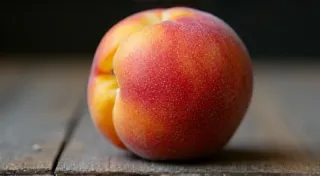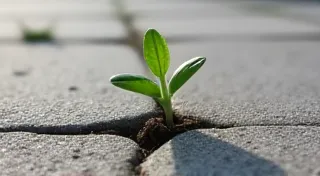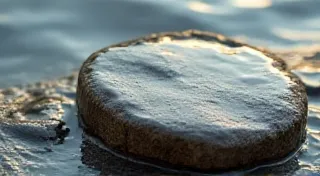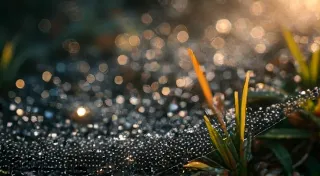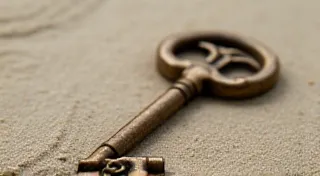Golden Threads: Weaving Connection Through Shared Vulnerability
There’s a particular resonance to antique accordions. Not just the rich, evocative sounds they produce—though that’s undeniably captivating—but something deeper. They’re instruments built of layers, bellows and keys painstakingly assembled, their beauty arising from a complex construction. And like us, they accumulate stories. Cracks appear, keys stick, bellows leak. They show the passage of time, the wear and tear of countless melodies played and shared. I remember finding an old Hohner accordion at a flea market years ago. It was battered, missing a few keys, and the leather bellows were cracked and brittle. I almost didn’t buy it, thinking it was beyond repair. But something about its sadness, its silent history, drew me in.
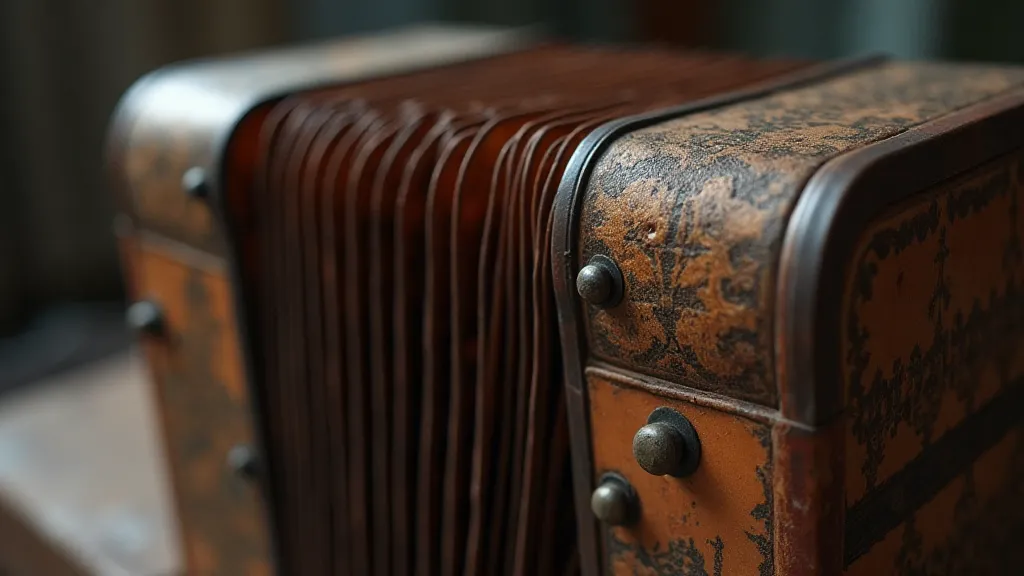
The Philosophy of Kintsugi: Embracing Imperfection
That feeling of connection, of seeing beauty in something damaged, led me to discover Kintsugi, the Japanese art of repairing broken pottery with gold. Kintsugi isn’t about concealing the cracks; it’s about highlighting them. It's a philosophy that celebrates flaws, recognizing that imperfections are part of an object's history, adding to its character and value. The word itself breaks down beautifully: kin means gold, and tsugi means to mend or join. Essentially, it’s the art of mending with gold. It's profoundly different from Western notions of restoration, which often strive for a pristine, “as-new” condition.
The origins of Kintsugi are often attributed to the 15th century, though similar philosophies likely existed before. Legend has it that a shogun, Ashikaga Yoshimasa, broke his favorite tea bowl and sent it to China for repair. Disappointed with the crude, invisible repairs he received, he asked Japanese artisans to find a more beautiful way to fix it. And so, Kintsugi was born, a technique that not only restored the bowl but elevated its status through the application of precious metals.
More Than Just Repair: A Metaphor for Resilience
The beauty of Kintsugi lies not just in the visual outcome, but in the profound message it conveys. It’s a visual embodiment of resilience. The broken pottery isn't seen as ruined; it’s seen as transformed. The cracks become visible, celebrated seams of gold, telling a story of fragility, survival, and renewed beauty. It mirrors the human experience so elegantly – our vulnerabilities, our struggles, our ability to heal and emerge stronger.
Consider the parallels with our own lives. We all experience breaks, whether emotional, relational, or personal. We might feel shattered, diminished, or irrevocably damaged. But Kintsugi reminds us that these breaks don't define us. They are part of our journey, contributing to the richness and complexity of who we are. Like the repaired pottery, we can find strength and beauty in our scars. The gold doesn't erase the past; it illuminates it, transforming it into something precious and unique.
The Craftsmanship Behind the Golden Seam
The process of Kintsugi is intricate and requires a deep respect for the materials and the history of the object. Traditional methods involve using a lacquer derived from the sap of the Toxicodendron vernicifluum tree, a type of sumac. This lacquer is mixed with powdered gold, silver, or platinum, depending on the desired aesthetic. Modern variations sometimes utilize epoxy resins, but the traditional methods hold a unique level of artistry and reverence.
The meticulous application of the gold lacquer is crucial. It’s not simply painted over the cracks; it’s carefully worked into the fissures, highlighting the contours of the break. Each piece of pottery tells a different story, and the Kintsugi artisan acts as a translator, revealing that story through the golden seams. The craftsmanship isn't just about technical skill; it’s about empathy and understanding.
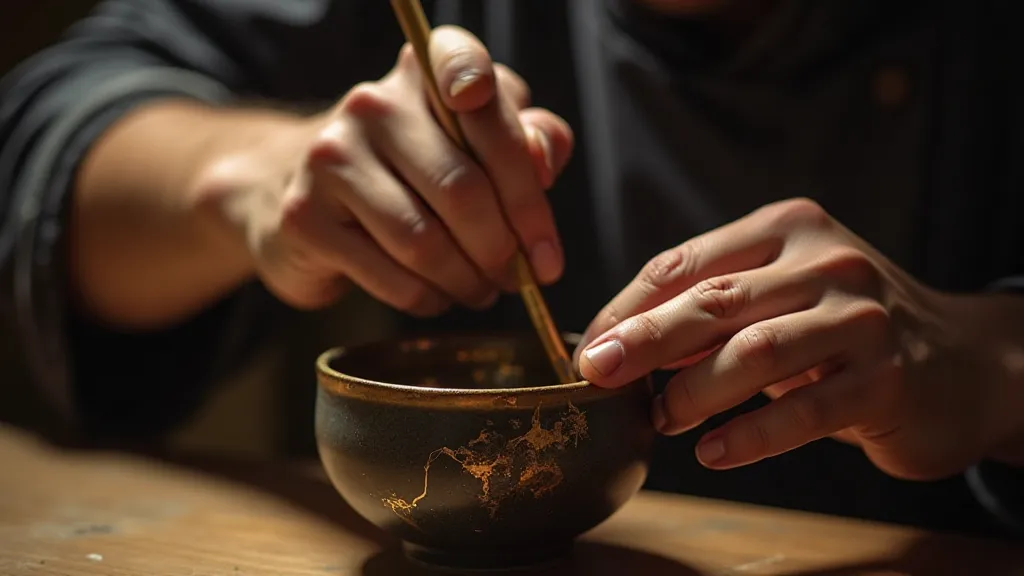
Kintsugi and the Power of Shared Vulnerability
I'm a writer, and I'm drawn to the idea of a writing community built on shared vulnerability. So much of what we produce is filtered, polished, presented as a flawless reflection of ourselves. But real connection happens when we dare to show the cracks, the vulnerabilities, the imperfections. It’s the shared struggles, the moments of self-doubt, that foster empathy and understanding. Just as Kintsugi celebrates the brokenness of the pottery, a supportive writing community celebrates the brokenness of the writer.
Think about it: a writer sharing a draft riddled with errors, a poet revealing a deeply personal struggle, a novelist admitting to moments of crippling self-doubt – these aren't signs of weakness; they are acts of courage. They create space for others to be vulnerable, to share their own stories without fear of judgment. That’s where the real magic happens - in the shared experience of imperfection.
Collecting and Appreciating Kintsugi Pottery
For those interested in collecting Kintsugi pottery, it's important to understand that authentic pieces are often quite valuable due to the labor-intensive process and the use of precious metals. However, there are also many beautiful contemporary pieces being created by artisans around the world. When acquiring a piece, consider the quality of the lacquer, the purity of the gold, and the overall aesthetic.
Beyond the monetary value, the true appreciation for Kintsugi lies in recognizing the philosophy it embodies. It's a reminder to embrace imperfection, to find beauty in brokenness, and to celebrate the stories that make us unique. It’s a lesson we can all apply to our lives, fostering resilience and building connections based on shared vulnerability.
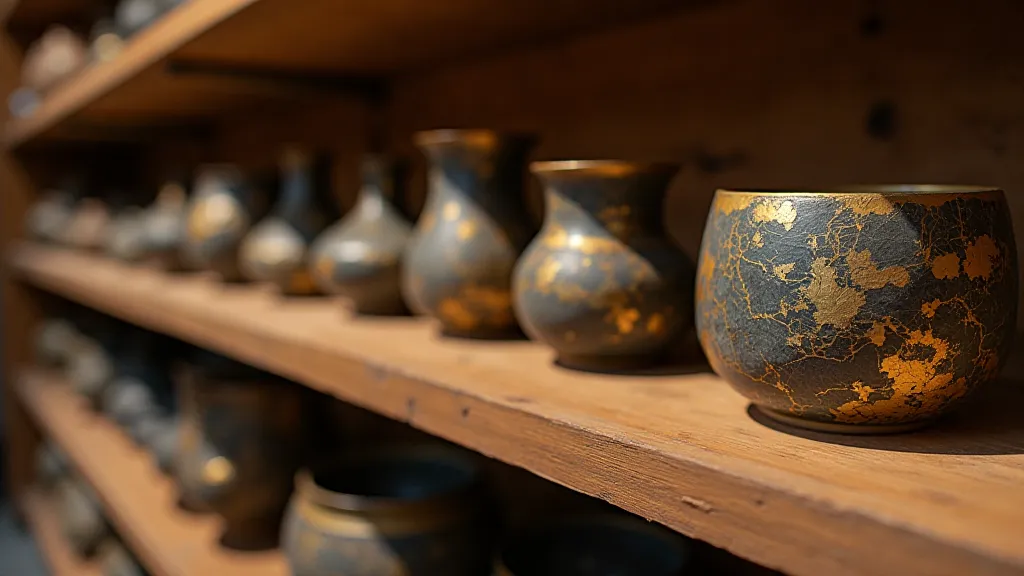
A Golden Reminder
That old accordion I found at the flea market? I'd love to get it properly restored someday, but part of me also appreciates its battered state. It's a tangible reminder of the beauty of imperfection, a golden thread connecting me to a history of use, resilience, and shared melodies. And just like a piece of Kintsugi pottery, it reminds me that even in our brokenness, we can find beauty, strength, and connection.
